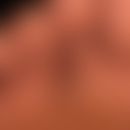Synonym(s)
HistoryThis section has been translated automatically.
General informationsThis section has been translated automatically.
Mostly saprophytic, pigmented (carotenoid) yeast fungus.
You might also be interested in
Occurrence/EpidemiologyThis section has been translated automatically.
Worldwide, ubiquitously distributed. Occurs naturally on the ground, in water, on trees and flowers, in food and in the air. Occasionally found in the household on toothbrushes, bath mats or shower curtains. Proven as a contaminant in sputum, urine, blood, etc. Rarely and mostly as a result of invasive procedures (venous catheters, indwelling cannulas) as an opportunist fungemic in immunocompromised patients, diabetics, AIDS or other serious underlying diseases.
ClinicThis section has been translated automatically.
Mostly severe systemic infections, e.g. septicaemia, meningitis, ventriculitis, myocarditis or peritonitis.
Cultures: Rhodotorula cultures are characterized by characteristic red to orange colonies with a smooth, waxy surface typical of yeasts. The red colony colour clearly distinguishes Rhodotorula species from the more human pathogenic Candida species.
MicroscopyThis section has been translated automatically.
- No hyphae.
- Pseudohyphs are usually absent or only rudimentary.
- Unicellular, elongated or bulb-shaped blastoconidia (occasionally encapsulated).
LiteratureThis section has been translated automatically.
- Kiraz N, Gulbas Z, Akgun Y (2000) Case report. Rhodotorula rubra fungaemia due to use of indwelling venous catheters. Mycoses 43: 209-210
- Lui Ay et al (1998) Amphotericin B lipid complex therapy in AIDS patient with Rhodotorula rubra fungemia. Clin Infec Dis 27: 892-893
- Merkur AB, Hodge WG (2002) Rhodotorula rubra endophthalmitis in an HIV positive patient. Br J Ophthalmol 86: 1444-1445
- Kiraz N, Gulbas Z, Akgun Y (2000) Case report. Rhodotorula rubra fungaemia due to use of indwelling venous catheters. Mycoses 43: 209-210
- Papadogeorgakis H (1999) Rhodotorula rubra fungaemia in an immunosuppressed patient. J Eur Acad Dermatol Venereol 12: 169-170
Outgoing links (1)
Aids;Disclaimer
Please ask your physician for a reliable diagnosis. This website is only meant as a reference.







